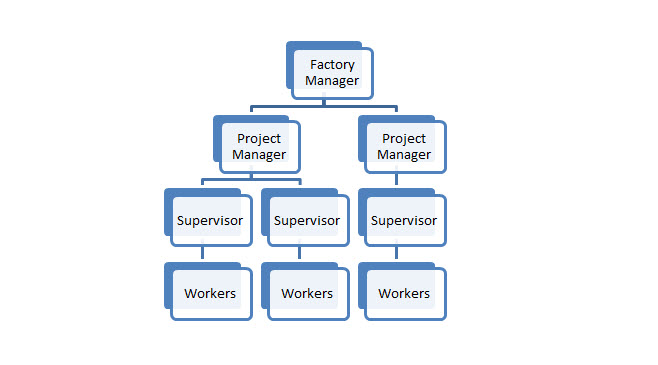Updated April 24, 2023
Difference Between Transactional vs Authentic Leadership
In an FMCG firm, there are two heads of departments, Phil and Martha. Phil, the head of Logistics, believes in supervising his subordinates closely after he assigns them their tasks. He also promises them various incentives for the completion of the work. If any worker fails to deliver, Phil gets upset and denies their due leaves or weekly offs. His subordinates know better than to get on the wrong side of Phil and try to keep him in good humor. On the other hand, Martha, the Market Research Manager, believes in giving her subordinates complete freedom to complete their work. She places a lot of trust in her workers and gives them autonomy to work as per their style after explaining the details to them. Martha’s subordinates love her leadership style and hold her in admiration. They look up to her for guidance and inspiration.
Phil’s leadership style is based on the Transactional style, while Martha is an Authentic Leader.
Transactional leadership is also called Managerial Leadership. It works in a structured system where authority and the chain of command are demarcated. The philosophy works on the principle of the transaction, i.e., give and take of reward and punishment. The leader uses the carrot-and-stick transactional leadership approach to get work done from subordinates.
If we consider Maslow’s Hierarchy of Needs, Transactional Leaders can be said to address the lower-level needs of security and acceptance.
Transactional leaders aim to fulfill their subordinates’ needs for security and social belonging, which are at the bottom of this pyramid. The higher level needs of esteem and self-actualization remain unaddressed by such leaders.
Transactional Leadership works within a set organizational culture and does not attempt to change or transform the culture as Transformational Leadership does.
Managers following this transactional leadership model place a lot of value on profits and share value and keep their eyes fixed on the bottom line. Monetary benefits matter to managers of transactional leadership mentality to the extent that these drive their actions and relationships with subordinates.
Authentic Leadership is a different approach to leadership. This approach follows ancient Greek philosophy focusing on developing prudence, temperance, justice, and fortitude in a leader.
Authentic leadership is based on the leader’s ethical and honest relationships with followers. Trust and openness are the hallmarks of such leaders. As the name suggests, authentic leaders are genuine about their relationships and transactions. They have no hidden agenda which they try to sell to their subordinates.
Authentic leaders value personal relationships and ethical interactions over monetary authentic leadership benefits and profits. Naturally, workers trust such leaders and are enthusiastic about working for them. Team spirit and individual effectiveness flourish in such an atmosphere.
Characteristics of authentic leadership
The following are the characteristics of authentic leadership:
- Self-awareness: Authentic leaders know their strengths, weaknesses, feelings, and values. They are fully aware of their limitations. Since they know their weak points, they don’t try to hide those from their subordinates.
- Openness and fairness: Authentic leaders think through each action plan and discuss ideas openly with their followers. They are fair, so they consider opposing viewpoints too.
- Transparency: Since authentic leaders are open about their emotions, they feel free to show them to their followers. Whether it is sorrow, fear, or doubt, they don’t need to wear masks to hide these feelings. Their empathy and sensitivity level with subordinates is also very high. They are sensitive to others’ needs and genuinely feel for their followers.
- Focus on sustained, long-term results: These leaders keep the mission and objectives of the organization in mind while making decisions. They are least likely to act solely for their own self-interest. They are patient and persevering and aim to achieve long-term shareholder value that best benefits the company and its employees.
So, the principles of authentic leadership are those of openness, trust, and doing away with pretenses and deception. Authentic leadership does not involve play-acting, in which leaders exhibit a different personality in the workplace and a different one in their personal lives.
There are many prominent theories about authentic leadership. An authentic leadership book by Bill George called “Authentic Leadership: Rediscovering the Secrets to Creating Lasting Value”, published in 2003, popularized the authentic leadership management style among many industry leaders.
The book stresses the importance of applying emotional intelligence in leadership and leading with genuineness and authenticity. The focus is on value-based, ethical leadership.
Authentic leaders demonstrate these five qualities:
- They know their purpose
- They follow leadership values
- They lead with their heart
- They establish genuine relationships
- They demonstrate self-discipline
A tool for assessing the level of authentic leadership in an organization is the Authentic Leadership Questionnaire (ALQ), a survey to be completed by subordinates to assess the level of authentic leadership behavior displayed by their superiors.
The authentic leader’s personal history, including life events (trigger events), helps in leadership formation. These personal histories and trigger events influence authentic leaders’ moral development and values.
Transactional vs Authentic Leadership
The following are the top differences:
| Transactional Leadership Advantages | Authentic Leadership Advantages |
| Treating work as a transaction lets everyone know where they stand. Wages and rewards are fixed as per the performance expected. If an employee fails to perform, the transaction can be altered. A leader can improve the transactional benefits if an employee shows good performance. | The leader’s openness and authenticity influence employees to cooperate and give their best. They work not for monetary authentic leadership benefits but because they feel involved and a part of the team. Worker participation is voluntary, not forced or manipulated. |
| Transactional Leadership Effect on Decisions | Authentic Leadership Effect on Decisions |
| It separates emotion from decision-making, and makes management a logical, clear-cut transactional process. | It is based on ethical and transparent processes of decision-making. Hence legal problems are minimized. |
| When Transactional Leadership Works | When Authentic Leadership Works |
| Followers need to know what they will get in return for their work, and they treat work as transactions without being emotionally involved. | In most situations, followers trust their leader and willingly follow him/her. Their involvement is total. |
| When Transactional Leadership Doesn’t Work | When Authentic Leadership Doesn’t Work |
| When employees become aware of being manipulated or don’t perceive any benefit in the transaction, they don’t put in the required effort. | When employees are focused on meeting low-level needs and care only about satisfying those needs, they are more interested in the monetary rewards, not the leadership quality. |
| Characteristics of Transactional Leaders | Characteristics of Authentic Leaders |
| Ambitious, driven, focused on the shareholder value and profit to the company, treat people as a means to an end. Sees transactional business as a mutually beneficial relationship, a profit-making activity. | Emotional, genuine, focused on followers’ authentic leadership development and team spirit growth. Views business as an ethical means to achieve everyone’s goals and objectives. |
| Effects of Transactional Leadership | Effects of Authentic Leadership |
| Followers are competitive with each other for rewards and benefits. They cooperate with the leader to achieve goals but do not trust him/her fully. They do not share values with their leader and work only in self-interest. | Followers trust and willingly follow their leader’s vision. They have complete faith in their leader. Since their leader’s words and actions complement each other, they try to emulate their leader and share problems with him/her. |
From the comparison, it is obvious that authentic leadership is preferable to transactional leadership in many ways. It can be further illustrated with the following case.
The Case of Conflicting Management Styles at ABC Minerals Ltd
ABC Minerals is a twenty-year-old limited company with 2000 employees and an annual turnover of 150 crores. It has a hierarchical structure of management and about six levels of management. Workers are stationed in various factories and workshops, and white-collared workers in the branch and regional offices. The following is the organizational structure of workshops:
There are roughly two to three project managers in each factory or workshop and about seven to eight supervisors who workers report to.
Sampat is a supervisor who manages about sixty workers. He is a senior employee who everyone respects and treats with regard. Knows his work well and is adept at handling almost all problems on the shop floor. He reports to Dave, the Project Manager – of Steel Projects. Barring minor incidents of occasional grievances, everything is smooth sailing at the workshop. Unlike the company’s other plants, there are fewer shutdowns or strikes. The credit for keeping things in control goes to a large extent to Sampat and his co-supervisors, who generally seek advice from Dave in matters relating to worker problems.
Dave’s management style is to trust and empower his supervisors and workers. He shares information freely with them and communicates often. Workers and supervisors look up to Dave and have complete faith in him. They have often accepted strict management policies and pay cuts only because Dave explained matters clearly and promised to speak up for them. Management sees Dave as a champion of worker rights, keeping their interest in mind whenever any decision must be taken.
The existing Factory Manager’s retirement comes up soon, after which management sends new recruit Rohan Thakur, an MBA graduate from a premier management college, to head the factory. Rohan joins the factory and is surprised to note the informal atmosphere prevailing in the works. Everyone is on first-name terms, and things work on personal equations. He is shocked to see such unprofessionalism in the factory and resolves to make things more professional.
Rohan streamlines a lot of processes and makes day-to-day reporting compulsory. He insists on all supervisors and project managers sending him daily and weekly reports. He keeps a close watch on finances and monitors spending in the factory. Expenses like monthly get-togethers and family gatherings soon get the axe. He seems reluctant even to spend on giving the best worker award that is usually given on a monthly basis, in the form of a plaque and a cash prize. His logic is that workers receive pay and benefits to do their work and should not expect further incentives.
When the issue of worker pay revision comes up, Dave and Sampat jointly bring the charter of demands from workers to Rohan. It is a meeting Rohan has avoided for a long and finally has to attend. Rohan is shocked to note that workers have demanded an increase of 10% on their basic pay. He refuses to concede to this demand and blames Sampat and other supervisors for pampering the workers. Dave explains that this Transactional demand has come after three years of no pay hike and is perfectly legitimate. Workers have not disrupted work in the past six months; neither has any slowdown occurred. The company has made profits in the last quarter. So worker demands can be considered.
Rohan confronts Sampat and makes him leave the meeting after shouting at him. He then tells Dave to inform the workers that since the company was currently facing a loss of 10 crores, they had no money to disburse in the present situation. So workers should give up their demands and settle for a 5% increase. Dave says that it was impossible to convince workers to scale down their demands, and in any case, he was against unethical practices like misinforming workers or manipulating them. He staunchly supported the workers in their demands and refused to have anything to do with denying them their dues.
Rohan is incensed at Dave’s impertinence and suspends him for disobeying him. Soon, workers get a whiff of the situation and begin an indefinite strike.
So, we can see in the above case that a transactional leader has created havoc in a mutually supportive atmosphere and shattered the trust workers had in management. Since a transactional leader cannot see beyond profits and monetary benefits, the value of interpersonal relationships has been completely ignored by him. He disturbs the precarious balance of harmony between workers and management because he treats workers as simply cogs in the wheel, not human, living entities with needs and expectations. He feels they should be happy and give output as long as they get their pay and a nominal hike.
An authentic leader like Dave can sense the underlying breach of trust that can occur if the situation goes as per Rohan’s wishes. He would take precautions not to hurt the interests of workers with any action taken by management.
Authentic leadership is, therefore, preferable to transactional leadership in every way. To be an effective leader, be authentic and base your decisions and actions on ethics and transparency. Your followers will thank you for it.







